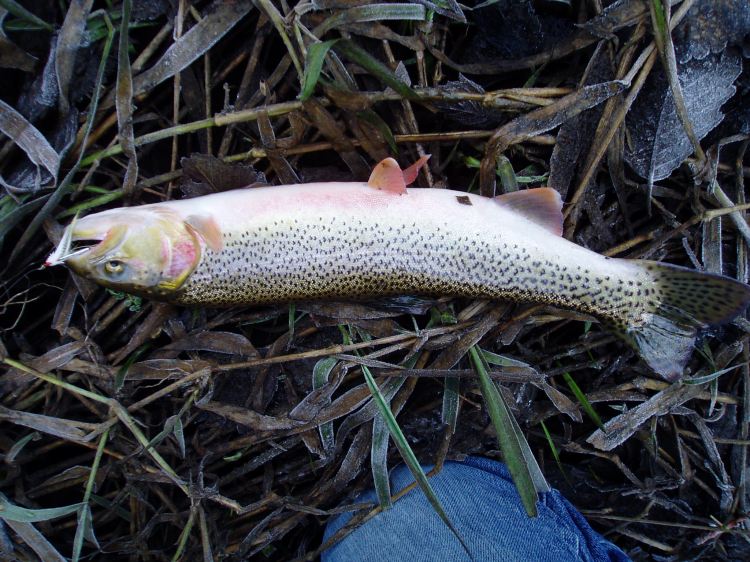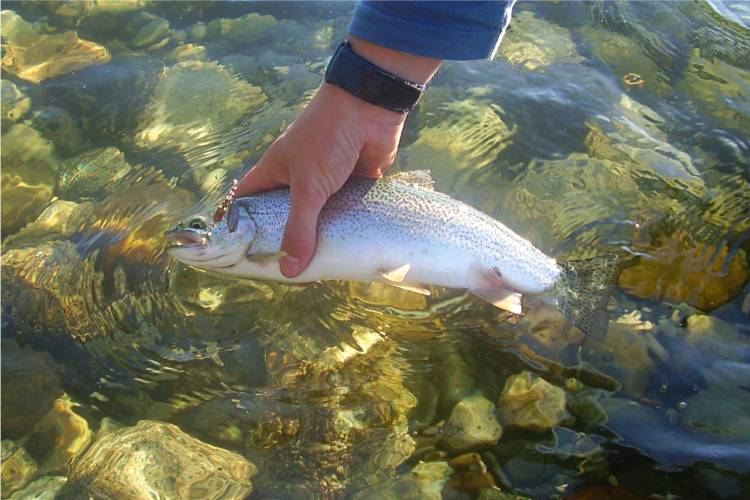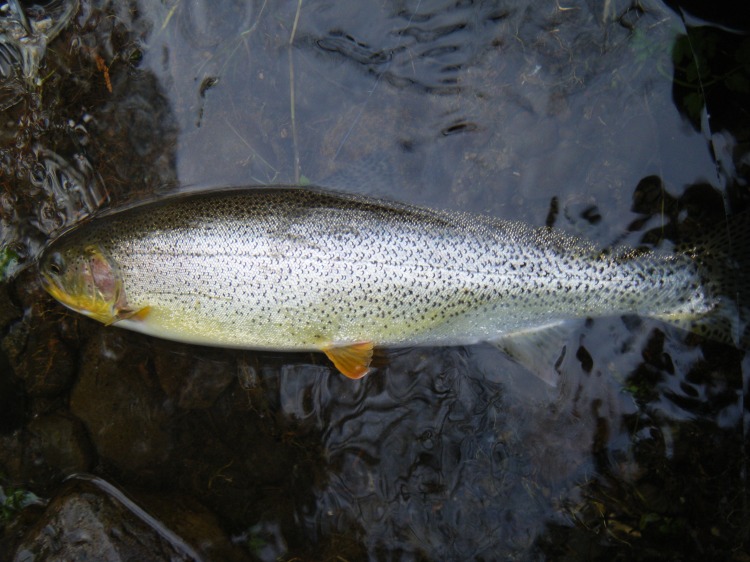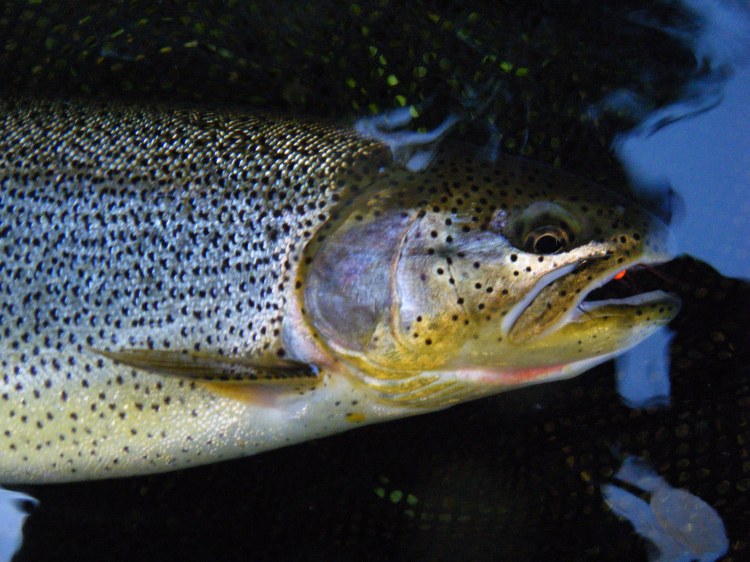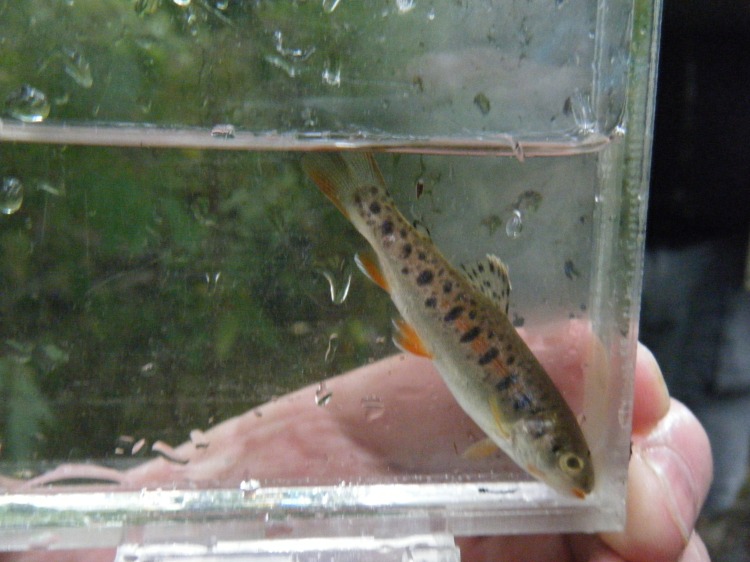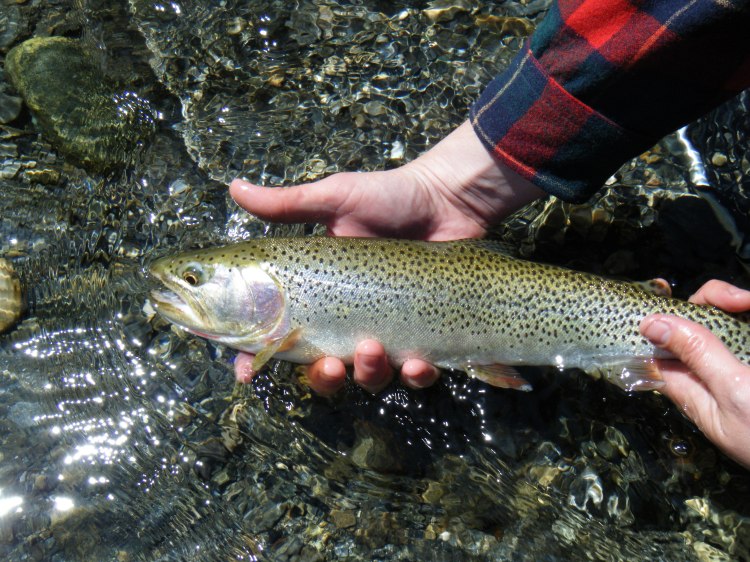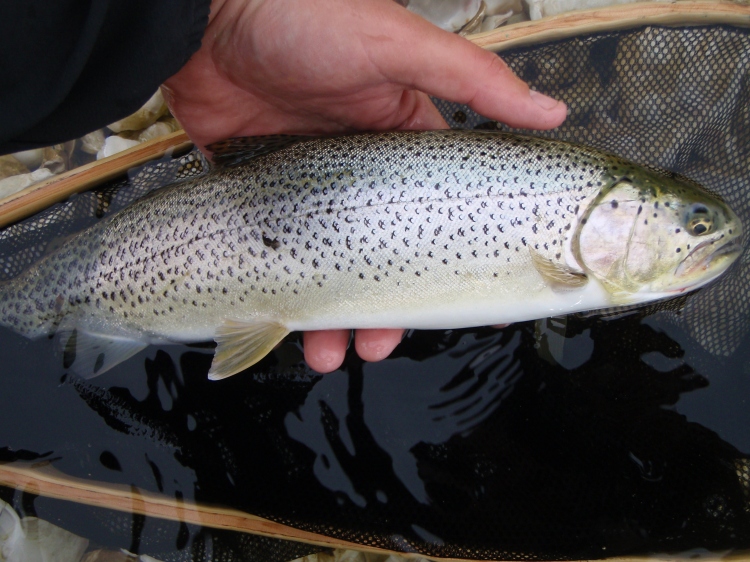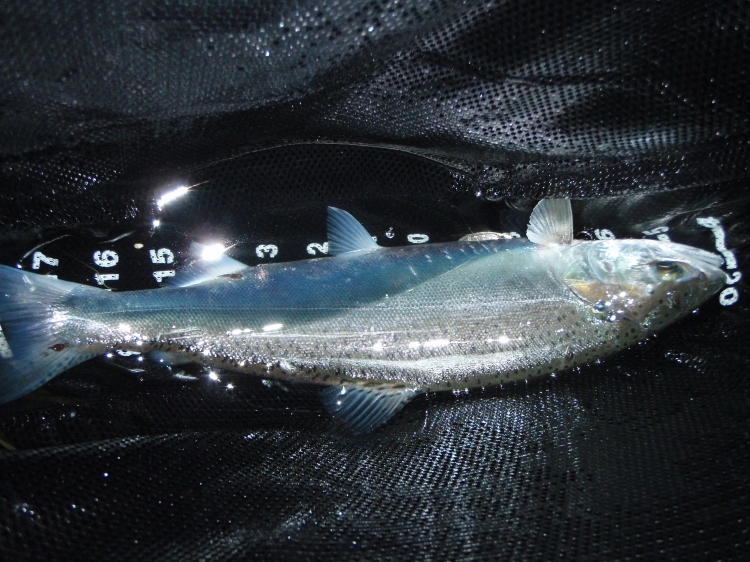Coastal cutthroat trout, variously known as harvest trout, yellowbellys, cutts, bluebacks, or golden death trout, are found throughout a truly wide range of marine and freshwater environments as well as conditions. Their range is from the Eel river drainage in California all the way north to Prince William sound in Alaska and they live in and around ditches and irrigation canals, urban creeks, brackish estuaries, harbours, marinas, lakes, beaver ponds, beaches, and indeed almost any other waterway found on the west coast of north America. It is important to remember that sea run cutthroat aren’t a separate species of trout, but the anadromous (migrate to the ocean) form of the coastal cutthroat trout’s (onchorhynchus clarki clarki) various life histories. Other life histories of the coastal cutthroat such as stream resident (often found above barriers/in headwaters) fluvial (migratory within a river and its tributaries) and adfluvial (lake dwelling fish that drop into rivers seasonally to feed or spawn), can be found intermixed with sea run cutthroat depending on the specific waterway (the Fraser river mainstem being a good example). A highly nomadic species, at times sea runs have been documented ranging far out off shore in the open ocean and conversely will also range largely with estuarine areas without venturing into open ocean. Their colouration is wildly variable depending on location, time of year, and life history. If there is one thing that is true about these fish, it’s that they are good at defying the conventional wisdom of anglers throughout it’s range.
Hatchery sea run
The size of this species is more diminutive than other sea run trout, with a common size range between 10″ and 16″ but truly remarkable specimens have been caught up to at least 7 or 8 lbs in salt water especially on Vancouver island.
A large (20″) sea run cutthroat
It can be fairly difficult by eye to determine if a cutthroat has an anadromous or resident life history when observed or caught in many rivers, however, the presence of sea lice on the trout, or the capture of a particular trout in salt water is an indication of likely anadromous lineage. Most people have difficulty identifying cutthroat trout, so here are a number of simple ways to identify these fish.
Anecdotally these fish are very handsome, visually striking fish, they have a relatively square fully spotted tail…
an often golden yellowish hue with orange or yellowish fins…
irregular widespread spotting…
and a predisposition for trying to eat well presented streamers.
While experienced observers can tell them apart fairly easily, localized traits and colouration of individual stocks and life histories is variable in coastal cutthroat and as such are best identified by the following quickly established traits:
A typical sea run cutthroat from a local south VI estuary
Red or orange “slashes” located on both sides of the lower edge of the lower jaw, it should be noted though that some fish display little, faint, or no slashes.
Unlike most rainbows the coastal cutthroat’s maxillary fin (upper jaw) extends to the back or beyond the eye on a true coastal cutthroat.
anal fin rays numbering 12 or fewer (salmon have 13 or more)
black pigment ring around the outer edge of the adipose fin interrupted once or twice
two rows of teeth on the base of the tongue, and two to twenty teeth on the basibranchials(floor of the mouth) plus teeth on the head and shaft of the vomer(vomerine) a bone in the upper jaw connected to the maxillary. It should be noted that these are not always present in all specimens. (thanks Frank for the names)
I haven’t got any pictures of these teeth, because it’s too hard on a live fish to get a photo. Having said that you don’t need to see these teeth to identify a cutthroat effectively.
If that’s not enough here’s a few more obscure traits used to identify cutthroat listed in Les Johnson’s Fly fishing coastal cutthroat trout:
*Note* please don’t use these techniques on living fish, while I can give you some impressive stories of their fortitude, a quickly snapped photo while in the water is all the handling these fish should undergo. Holding a live wild fish down or out of the water to count it’s dorsal fin rays is a douche move.
150-180 scales along the lateral line (steelhead have fewer than 150)
The dorsal fin is narrower than in rainbows and has rays numbering 9-11 individual rays, and usually feature 10(rainbows/steelhead have 10-13, usually have 11-12)
pelvic fin rays usually numbering 9 rays(rainbows/steelhead usually have 10)
Cutthroat parr
A recovering post spawn cutthroat caught in late may
A darker pre spawn male caught in mid november
Just to blur the lines a little bit there are also “cuttbows” or rainbow trout/coastal cutthroat hybrids in many systems which display various colourations and mixed traits, and like regular cutthroat, are easily misidentified. There has been the assertion that the larger sea run cutthroat specimens in excess of 20-22″ are such hybrids, and indeed even some of the pictures I have posted seem as if they could be as well. Lake “run” coastal cutthroat can attain much larger sizes than this, easily in excess of 10 lb.
Here is an interesting fly fishing based discussion on just such a topic:
These are coastal cutthroat trout
And these are rainbow trout
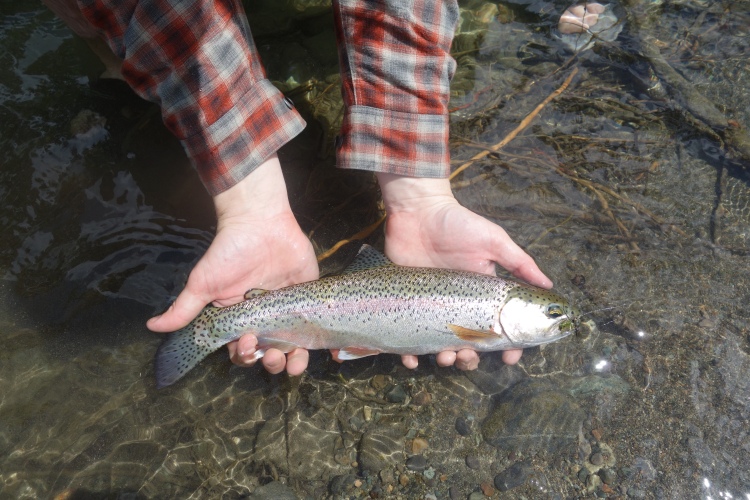
And these are coho jacks, not to be mistaken
Here are some helpful links and resources on salmonid and sea run cutthroat identification and traits:
A population survey of salmonids, differentiating coastal cutthroat from other species:
http://www.tandfonline.com/doi/full/10.1577/C08-006.1#.VExTe2wtDIU
A nice accessible succinct summary of the coastal cutthroat and it’s characteristics is found in:
Fly Fishing Coastal Cutthroat Trout by Les Johnson
The BC government sport fish identification page
http://www.env.gov.bc.ca/fw/fish/sport_fish/#CoastalCutthroatTrout
WDFW’s simplistic description of sea run cutthroat and other salmonids
http://wdfw.wa.gov/fishing/salmon/cutthroat.html
Wikipedia
http://en.wikipedia.org/wiki/Coastal_cutthroat_trout
80’s US government info
Some interesting info from the 1995 cutthroat trout symposium (referred to in Les Johnson’s book)
http://oregonstate.edu/dept/ODFW/conference/srctabs.html
CRD bio of the species
https://www.crd.bc.ca/education/our-environment/wildlife-plants/marine-species/cutthroat-trout
Umpqua river coastal cutthroat data
https://www.crd.bc.ca/education/our-environment/wildlife-plants/marine-species/cutthroat-trout
http://docs.streamnetlibrary.org/CoastalCutthroatData/sn600219.pdf
* I am currently searching for more hard data on these fish and will update as I locate more info*
